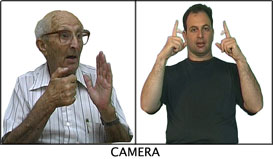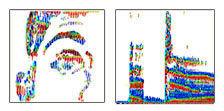Algerian Jewish Sign Language
- Post author:eorion2
- Post published:January 15, 2013
- Post category:About Our Languages
Algerian Jewish Sign Language (AJSL) originated in Ghardaia, a Berber town located in the M’zab (sub-Saharan) region of Algeria. The Jewish community there was socially isolated from the other town residents. Consanguineous marriage resulted in a high percentage of deafness (2.5%), and a sign language developed there, going back at least five generations. By the 1960s, the entire Jewish community had fled Ghardaia and emigrated to Israel or to France, where deaf people continued to use the sign language among themselves and with their hearing family members. The older members of the community are fully bilingual in AJSL and ISL. The descendants of the original group from Ghardaia know some signs from AJSL, but are not fluent, and the language is endangered.
In our research, we investigate the socio-linguistic conditions that led to the emergence of the language in Ghardaia and to its survival in Israel, unlike the other sign languages that immigrants brought to Israel from other countries and abandoned. Additionally, we document the vocabulary of Algerian Jewish Sign Language (see AJSL dictionary) and its linguistic structure.
link to Dictionary (under construction…)


